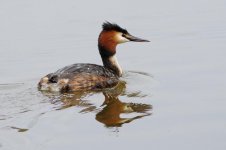ColSebastianMoran
( IRL Richard Karash )
Planning for my annual Florida trip. I'll be at Wakodahatchee, Grand Cay, Ding Darling, Estero, Corkscrew Swamp and so forth. Possibly Shark Valley.
My rig for these shoots is a crop body with 300 f/4 on a monopod. That's served me well over the years. But, I'd like 24MPx instead of my D300, and my Nikkor 300mm F4 EDIF-AF is two generations old. What update route to take?
- D7200 with one of the newer 300 f/4's?
- D7200 with the new 200-500mm f/5.6?
- D600 with the 200-500?
My needs:
- Really good AF. I'll try birds in flight sometimes
- Image quality wide open or only one stop down. f/4 or f/5.6 is what I want in these locales. Smooth OOF areas.
- 24MPx feels just fine these days
- With just a monopod, I'm shooting typically 1/1000th and ISO 1000+.
Will the 200-500 produce images at 300mm f/5.6 that feel as sharp as I'm getting now?
Compare a 500mm shot with the zoom to the crop of a 300mm shot with the prime.
Any other thoughts? I'm clear that I don't want to carry the usual big iron for birding (500 f/4, tele-converter, big tripod, gimbal head).
Here's a sample, White Ibis at Estero, 2013, D300, Nikkor 300mm f/4 EDIF-AF.

My rig for these shoots is a crop body with 300 f/4 on a monopod. That's served me well over the years. But, I'd like 24MPx instead of my D300, and my Nikkor 300mm F4 EDIF-AF is two generations old. What update route to take?
- D7200 with one of the newer 300 f/4's?
- D7200 with the new 200-500mm f/5.6?
- D600 with the 200-500?
My needs:
- Really good AF. I'll try birds in flight sometimes
- Image quality wide open or only one stop down. f/4 or f/5.6 is what I want in these locales. Smooth OOF areas.
- 24MPx feels just fine these days
- With just a monopod, I'm shooting typically 1/1000th and ISO 1000+.
Will the 200-500 produce images at 300mm f/5.6 that feel as sharp as I'm getting now?
Compare a 500mm shot with the zoom to the crop of a 300mm shot with the prime.
Any other thoughts? I'm clear that I don't want to carry the usual big iron for birding (500 f/4, tele-converter, big tripod, gimbal head).
Here's a sample, White Ibis at Estero, 2013, D300, Nikkor 300mm f/4 EDIF-AF.







